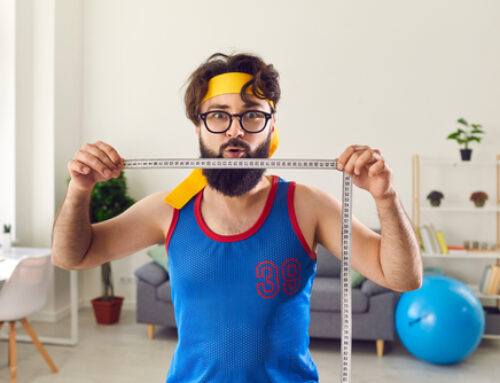For the elderly, exercise can quite literally save your life.
As you get older your muscle and bone mass decrease and the senses that guide your balance, vision, touch, proprioception, may all start to deteriorate. This can make you unsteady on your feet. Needless to say, bone fractures and brain injuries resulting from falls can be life threatening. Exercise is a key to maintaining your balance as you get older, and should really be viewed as a necessity like eating and sleeping, as it can quite literally save your life.
By taking the time to do balance, strength, and other exercises on a regular basis you can keep your sense of balance strong, and even restore what’s already been lost. The ability to balance on one leg is an important predictor of injury-causing falls, so if you know that you’d be shaky if you tried to stand on one foot, you’re at an increased risk of being hurt in a fall and should start appropriate exercises immediately.
Another accurate predictor of longevity is your ability to get off of the floor from a sitting position without using any help. The more hands, knees, and other body parts that have to be placed on the ground when going from a sitting to standing position has been directly related to a shorter life span.
Try it for yourself. Start by sitting Indian-style on the floor, then stand up. If you use one or less contacts on the floor, then you did great. 2-3 contacts on the floor has a predictor of 5-7 years less of life. 4 or more contacts predicts up to 10 years less than your average lifespan for gender other socioeconomic norms.
No bones about it, you need exercise!
Without question, osteoporosis drugs are likely to cause more long-term harm than benefit. Studies have actually linked biphosphate bone strengthening drugs like Fosamax, Actonel, Boniva and Reclast to an increased risk of femur fractures. One of the latest and largest studies to date discovered that women who’ve been on bisphosphonates for more than five years have a nearly three times higher risk of these dangerous fractures.
Your bones are actually very porous and soft, and as you get older, your bones can easily become less dense and hence, more brittle, especially if you are inactive. Resistance training can combat this effect because, as you put more tension on your muscles, it puts more pressure on your bones, which then respond by continuously creating fresh, new bone. In addition, muscle is heavier than fat, so as you build more muscle, and make the muscle that you already have stronger, you also put more constant pressure on your bones, which automatically helps maintain bone strength.
Coral Calcium, Vitamin D, Magnesium, Fish Oil, and an alkaline diet have all shown to help keep bone mass and possibly reverse bone loss. Avoiding acidifying foods like soda and processed meals while increasing lightly cooked green vegetables like kale, spinach, broccoli, and brussel sprouts should be a part of everybody’s eating plan.
We’ll be expanding upon these principles in our upcoming health seminars:
Stop Arthritis and Increase Bone Mass – FREE! September 25, 6:00pm, at our downtown Roanoke, VA chiropractic office.
Healthy Fall Cooking – FREE! October 9, 6:00pm, at our downtown Roanoke, VA chiropractic office.
Email us to reserve your spot at these classes. Dr. Daryl Rich, DC, CSCS
Our 3-week hallmark nutrition and exercise seminar teaches not just what to eat, but how to do it in a busy world. We focus on the techniques that have helped hundreds lose weight, drop blood pressure, increase muscle, and reduce fatigue.






